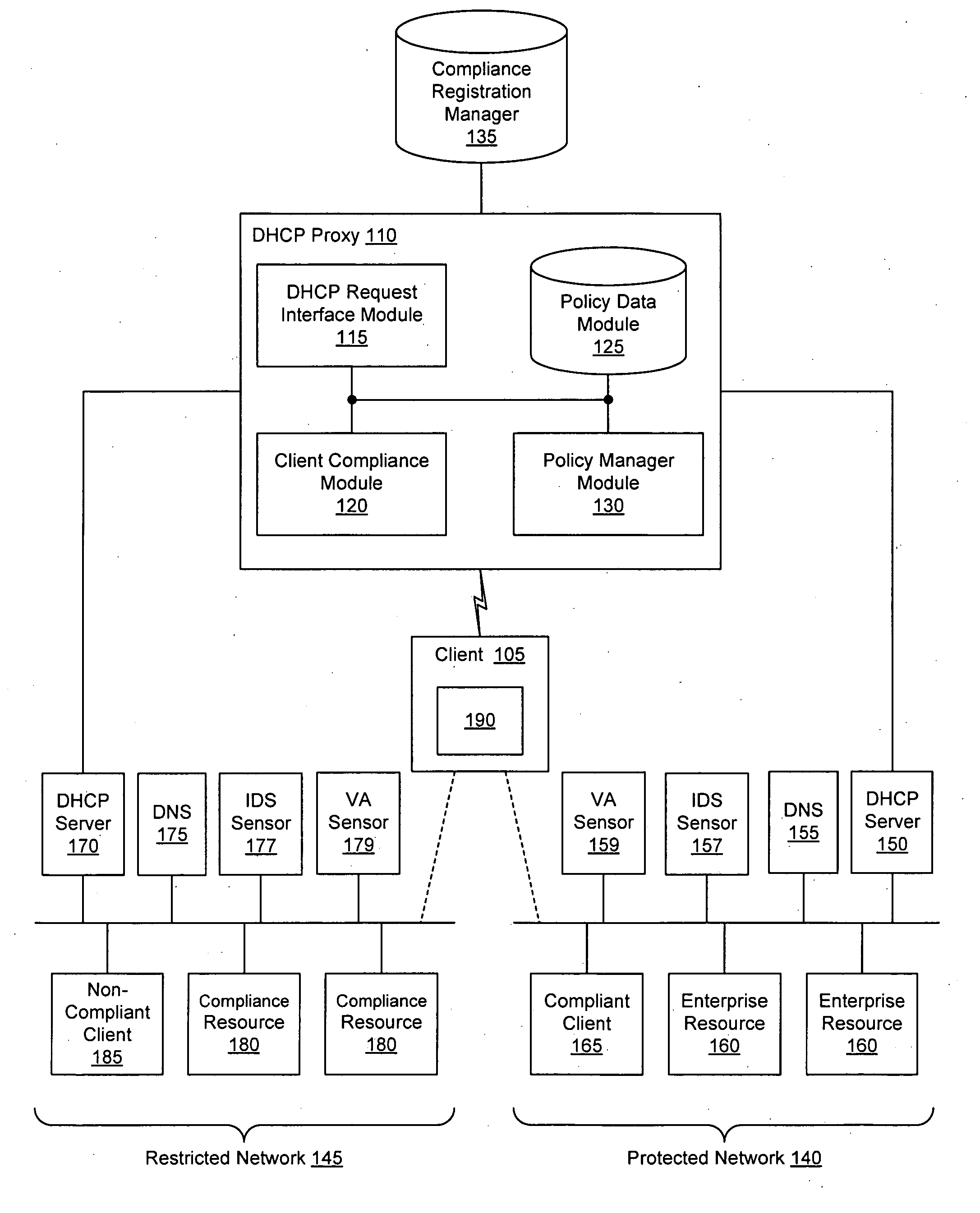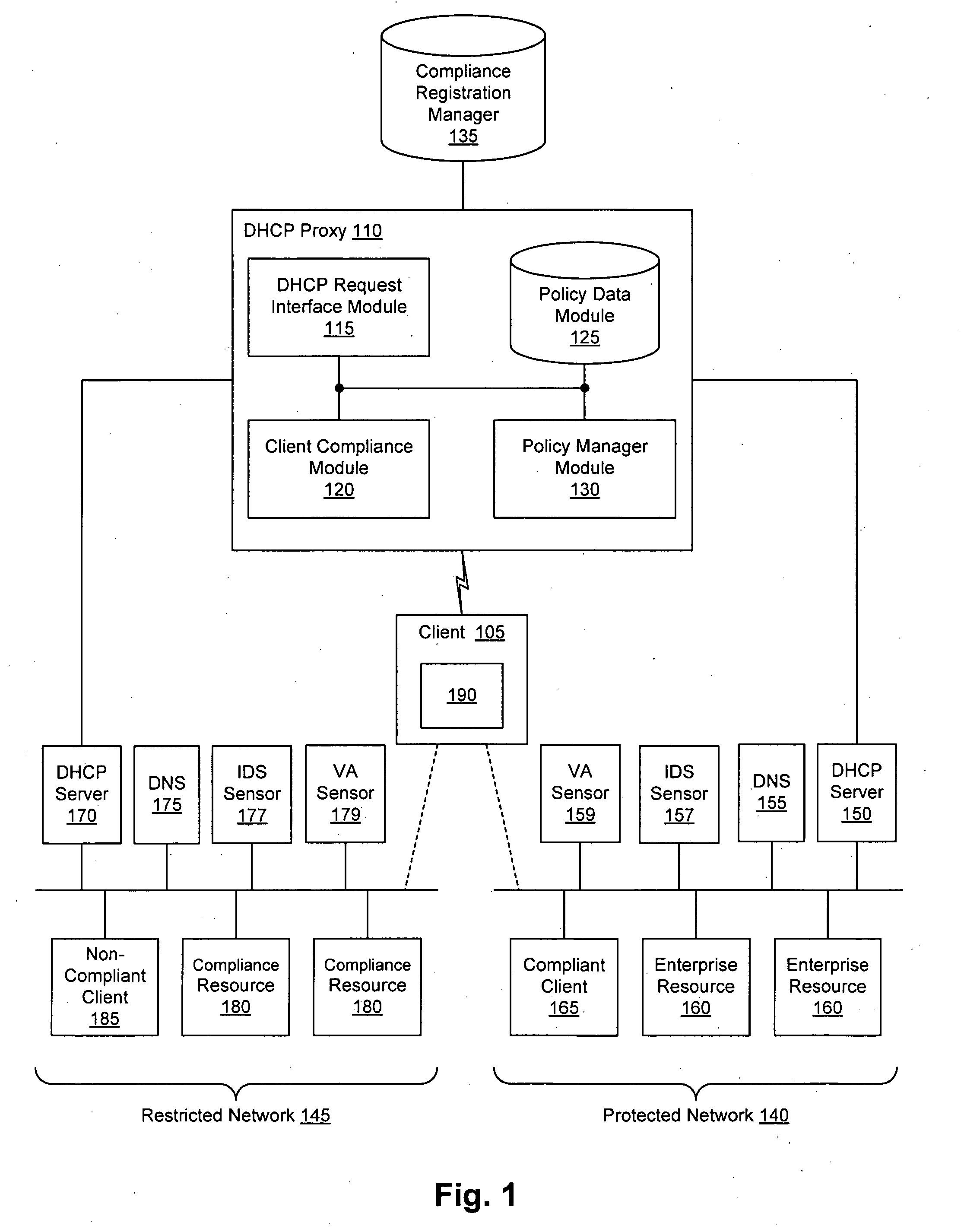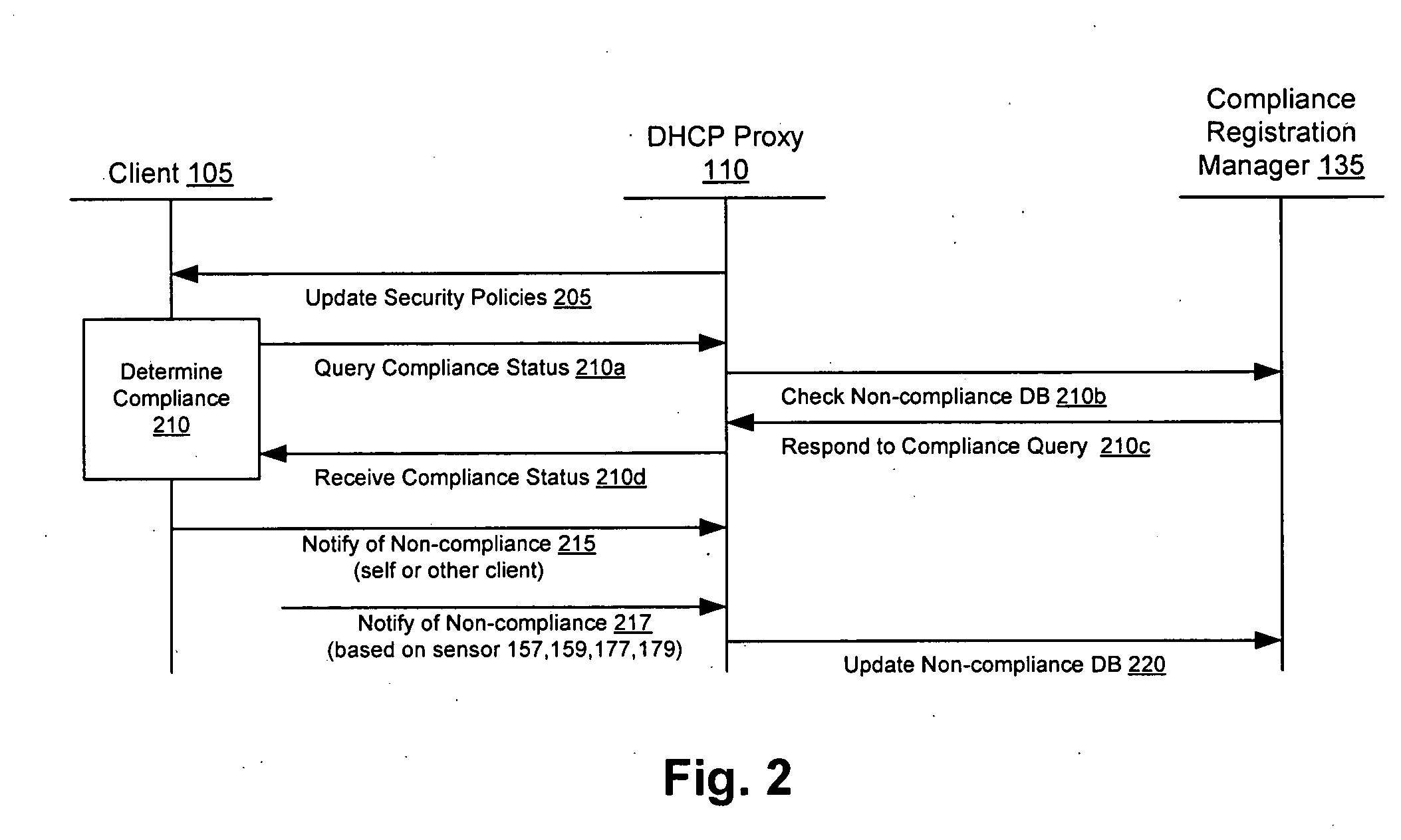Client compliancy with self-policing clients
a client and self-policing technology, applied in the field of client compliance, can solve problems such as ineffective communication mechanisms between non-compliance and achieve the effect of reducing the number of non-compliances of clients and other elements on the network
- Summary
- Abstract
- Description
- Claims
- Application Information
AI Technical Summary
Benefits of technology
Problems solved by technology
Method used
Image
Examples
Embodiment Construction
[0015] Techniques are disclosed that allow clients and other compliancy authentication elements to tell that a particular client appears to be out of compliance. Security sensor data (e.g., from IDS, VA, and other security sensors) is used to enhance the compliancy determination in a client compliancy system. A non-compliance database is used to store the security sensor data.
[0016] General Overview
[0017] There are a number of reasons that a client may be out of compliance and unaware of the non-compliance. For example, antivirus may be installed and active, but the client's virus definition set may be stale; if such a client were infected with a new virus, the stale definitions would cause the virus to go undetected. Likewise, not all of the available operating system security patches may be installed. Other reasons for non-compliance may depend on the local network rules. For instance, the network administrator may require active scripting to be disabled, and visiting machines t...
PUM
 Login to View More
Login to View More Abstract
Description
Claims
Application Information
 Login to View More
Login to View More - R&D
- Intellectual Property
- Life Sciences
- Materials
- Tech Scout
- Unparalleled Data Quality
- Higher Quality Content
- 60% Fewer Hallucinations
Browse by: Latest US Patents, China's latest patents, Technical Efficacy Thesaurus, Application Domain, Technology Topic, Popular Technical Reports.
© 2025 PatSnap. All rights reserved.Legal|Privacy policy|Modern Slavery Act Transparency Statement|Sitemap|About US| Contact US: help@patsnap.com



